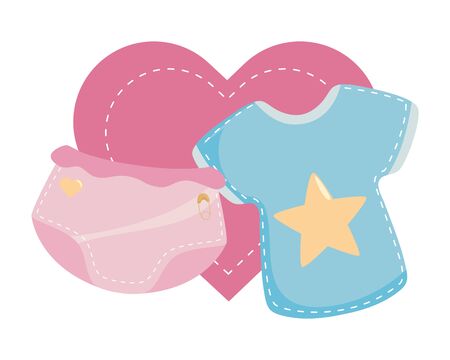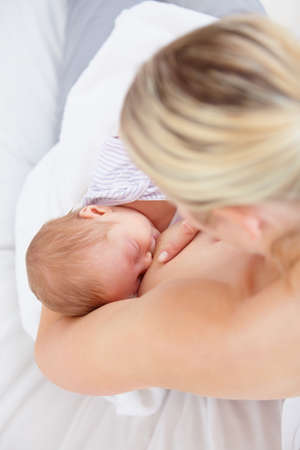Introduction to Swaddling in the UK
Swaddling, the gentle art of wrapping a newborn snugly in a blanket, has long been a cherished practice for many British families. Rooted in centuries-old tradition, swaddling was once thought to help infants feel safe and secure, mimicking the close comfort of the womb. Over time, the popularity of swaddling has ebbed and flowed, shaped by both cultural beliefs and evolving scientific research. Today, many modern parents across the UK are rediscovering swaddling as a soothing bedtime ritual that can settle restless babies and promote better sleep. Yet, with this resurgence comes a focus on safety and best practices, ensuring that every little one is kept cosy without compromising wellbeing. In this article, well explore how swaddling fits into contemporary British parenting, from its historical roots to todays recommended guidelines for safe sleep.
2. Benefits and Risks of Swaddling
Many new parents in the UK consider swaddling as a way to help their newborns feel secure and sleep more soundly. The practice mimics the snug environment of the womb, which can be comforting for little ones during those early weeks. Swaddling is especially popular for settling babies who are easily startled or have trouble sleeping due to their natural startle reflex. However, its essential to weigh these advantages against potential risks, keeping NHS guidance in mind.
Why Do Parents Choose to Swaddle?
| Benefit | Description |
|---|---|
| Improved Sleep | Swaddled babies often settle faster and may sleep for longer stretches, as the gentle pressure helps reduce waking from sudden movements. |
| Soothing Effect | The snug wrap can help calm fussy or colicky infants, providing reassurance similar to being held. |
| Reduces Startle Reflex | Swaddling can prevent babies from accidentally waking themselves with jerky arm movements caused by the Moro (startle) reflex. |
Potential Risks According to NHS Advice
While there are clear benefits, the NHS advises parents to be cautious when swaddling, as improper technique or overuse can lead to health concerns:
- Overheating: Wrapping your baby too tightly or using heavy blankets can cause them to become too warm, which increases the risk of sudden infant death syndrome (SIDS).
- Hip Development: Swaddling with legs straightened and pressed together may contribute to hip dysplasia. The NHS recommends allowing plenty of room for the hips and knees to move freely.
- Suffocation Risk: Loose swaddles or blankets coming undone pose a risk if they cover your babys face. Always use a secure but not restrictive swaddle.
NHS Recommendations at a Glance
| Dos | Donts |
|---|---|
| Use lightweight cotton or muslin cloths Leave enough room for hip movement Always lay baby on their back to sleep Stop swaddling as soon as baby shows signs of rolling over |
Avoid thick blankets or quilts Dont swaddle too tightly around chest or legs Never put baby on their front or side to sleep while swaddled Avoid covering babys head or face |
The key takeaway is that swaddling can be both beneficial and safe if practiced correctly. Always follow current NHS guidelines and adapt your approach as your baby grows and develops new skills.

3. Safe Swaddling: British Standards and Guidelines
When it comes to swaddling your newborn, following safe practices recommended by British health authorities is key to ensuring your baby’s comfort and safety. The NHS and organisations like The Lullaby Trust provide clear advice tailored for UK families. First and foremost, always use a lightweight, breathable blanket—never anything too thick or fluffy, as this can cause overheating, a known risk factor for sudden infant death syndrome (SIDS) in the UK. Make sure your baby is placed on their back to sleep, as this is the safest sleeping position recommended nationally. Keep the swaddle loose around the hips and legs to allow natural movement and reduce the risk of hip dysplasia—a point highlighted by the Royal College of Midwives. Never cover your baby’s head or face with the swaddle; keep the fabric below shoulder level to prevent suffocation risks. It’s also important not to swaddle babies who show signs of rolling over, as advised by British child safety experts. Instead, transition them to a sleep sack or let them sleep without swaddling at this stage. Regularly check your baby to ensure they aren’t overheating—touch their chest or back of the neck; they should feel warm but not sweaty. By following these trusted guidelines, you’ll help create a safer sleeping environment that reflects best practice across the UK.
4. Step-by-Step Swaddling Instructions
Swaddling your newborn can be a comforting and calming ritual, but it’s important to do it safely and in line with best practices commonly followed by British parents. Here’s a step-by-step guide using language and references familiar to UK families.
Essential Kit for Swaddling
| Item | Why Its Important |
|---|---|
| Cellular blanket or swaddle wrap | Lightweight and breathable, as recommended by the NHS |
| Flat, safe surface (e.g., Moses basket or cot) | Ensures baby’s safety during swaddling |
| Nappy changed and babygrow on | Keeps baby comfortable and ready for sleep |
How to Swaddle Your Baby: Step-by-Step Guide
- Lay out your blanket: Place a cellular blanket or muslin wrap flat on the bed or changing mat in a diamond shape, with one corner pointing up.
- Fold down the top corner: Fold this corner down about 15cm (6 inches) to create a straight edge – perfect for tucking under baby’s neck and keeping things neat as a pin.
- Place your baby on the blanket: Gently lay your little one on their back, with shoulders just below the folded edge. Make sure their head is uncovered at all times, in line with Lullaby Trust guidance.
- Tuck in one arm: Hold your babys right arm gently against their side. Take the left side of the blanket across their body and tuck it snugly under their left side, leaving hips and legs loose for healthy development.
- Tuck in the other arm: Bring the bottom corner of the blanket up over baby’s feet (not too tight) and then bring the right side of the blanket across, securing it under their back. Ensure both arms are gently wrapped but not pinned down, allowing for natural movement.
- Straighten and check: The swaddle should be firm but not restrictive—your baby should be able to move their hips and breathe easily. Always put your baby down to sleep on their back in their own sleep space such as a Moses basket or cot.
Troubleshooting Common Issues
| Issue | How to Fix It (British Approach) |
|---|---|
| The swaddle comes undone easily | Try using a larger cellular blanket or a purpose-made swaddle pod from trusted British brands like Grobag or Tommee Tippee. |
| Your baby seems too hot or sweaty | Remove a layer of clothing or switch to a thinner muslin wrap—always check room temperature (16–20°C is recommended). |
| Your little one is unhappy when swaddled | No worries—some babies prefer having their hands near their face. Try swaddling with arms out, or use sleep sacks instead. |
A Final Word on Safety from UK Experts:
The NHS and Lullaby Trust advise that you stop swaddling once your baby starts showing signs of rolling over. Always place your baby on their back for every nap and night-time sleep, and never cover their face with blankets. With these steps, you’re well on your way to creating a cosy, safe bedtime routine—just like countless British families have done for generations!
5. When to Stop Swaddling
Knowing when to stop swaddling your little one is just as important as learning how to do it safely. Following UK child development guidelines, it’s vital to pay attention to your baby’s physical cues and developmental milestones. Most health professionals in Britain recommend stopping swaddling as soon as your baby starts showing signs of rolling over, which is typically around 8 weeks old, but can be earlier or later for some babies.
Recognising the Signs
If you notice your baby is becoming more active, wiggling their arms free, or attempting to roll onto their side or tummy, these are clear indicators that it’s time to transition away from swaddling. Rolling over while swaddled can increase the risk of suffocation and SIDS (Sudden Infant Death Syndrome), which is why the NHS strongly advises parents to stop swaddling at this stage.
How to Transition
To help your baby adjust, you might start by leaving one arm out of the swaddle for a few nights, then both arms out before removing the swaddle altogether. Introducing a baby sleeping bag or using sleepwear suitable for British weather conditions can help keep your little one cosy without restricting movement.
Supporting Safe Sleep
Remember, every child develops at their own pace. Stay observant and chat with your health visitor or GP if you’re unsure about when to stop swaddling. By following UK safety advice and watching your baby’s cues, you’re supporting not only their comfort but also their healthy development.
6. Alternatives to Swaddling in the UK
While swaddling can help soothe some newborns, its important for UK parents to know there are other British-approved ways to keep your little one safe and snug at night.
Baby Sleeping Bags: A Popular British Choice
Many UK families now opt for baby sleeping bags—also known as “sleep sacks.” These wearable blankets keep your baby warm without loose bedding, reducing the risk of suffocation or overheating. Look out for sleeping bags that meet British safety standards (BS EN 16781:2018) and choose a TOG rating suitable for your home’s temperature.
Key Benefits:
- No loose covers that could accidentally cover your baby’s face
- Consistent warmth throughout the night
- Freedom of movement for little legs, supporting healthy hip development
Other Safe Sleep Solutions
Alongside sleep sacks, consider these trusted UK sleep practices:
- Layering Clothes: Dress your baby in layers rather than using blankets. A vest and babygrow are often enough for most British homes.
- Moses Baskets & Cots: Place your baby on their back in a clear cot or Moses basket with a firm, flat mattress and no pillows or soft toys.
- Room Sharing: The NHS recommends keeping your newborn in the same room as you for at least the first six months—night and day.
Remember:
The Lullaby Trust offers excellent guidance on safe sleep for babies in the UK. Always follow their advice and check that any product you use meets current British safety regulations.
Ultimately, whether you choose to swaddle or use a sleeping bag, following these best practices ensures your baby sleeps safely and soundly—giving both you and your little one peace of mind.

